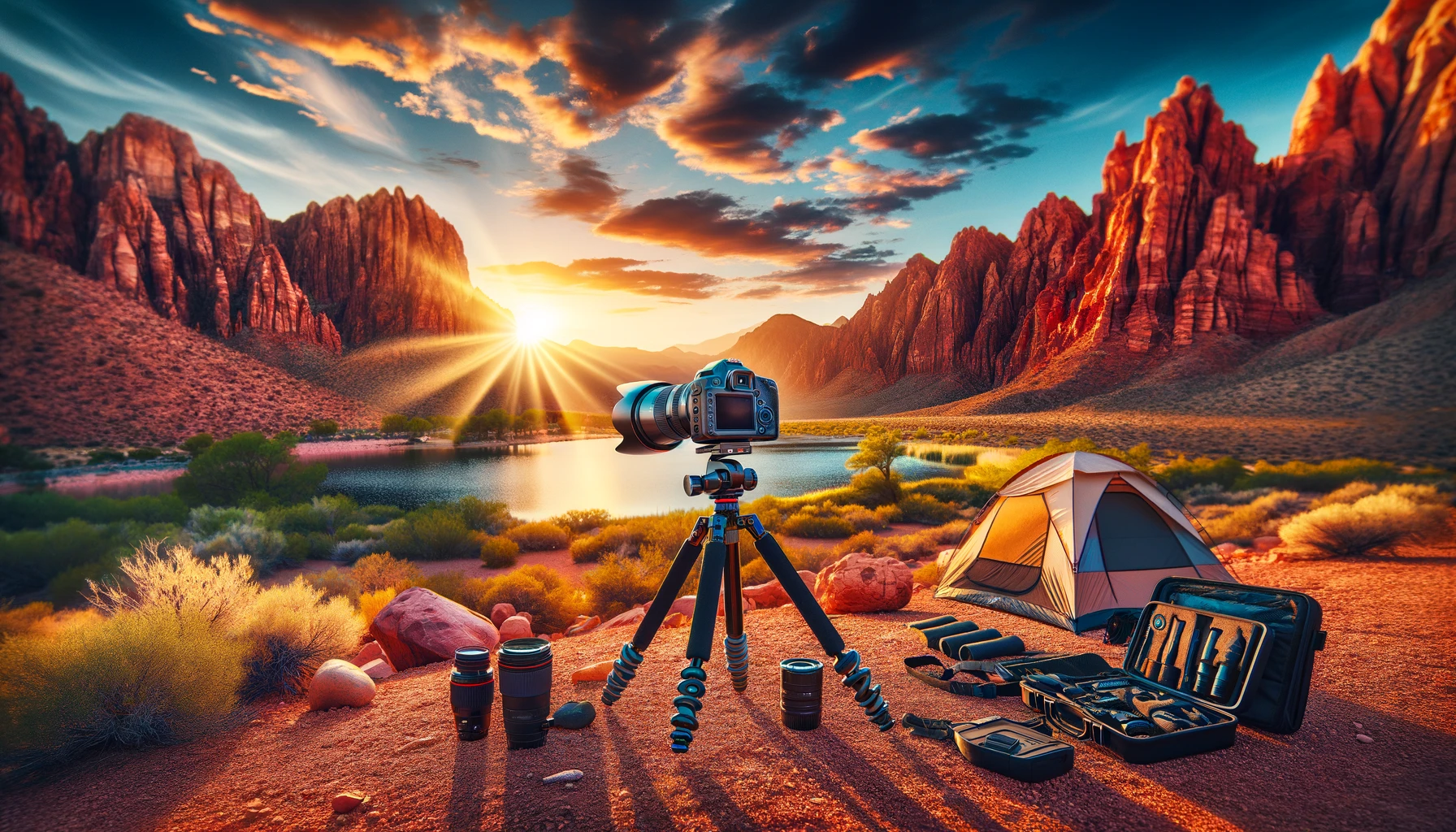Las Vegas is renowned for its dazzling city lights and vibrant nightlife, but just beyond the city’s hustle and bustle lies a world of stunning natural beauty waiting to be explored and photographed.
From the fiery red sandstone formations of Valley of Fire State Park to the serene waters of Lake Mead, camping around Vegas offers an array of picturesque landscapes. Capturing these moments requires not just a passion for adventure but also a keen eye for photography. In this article, we will dive into the best locations for your Vegas camping adventure, share essential photography tips, and discuss the best equipment to bring along.
Best Locations for Vegas Camping Adventures
Valley of Fire State Park
Just an hour’s drive from Las Vegas, Valley of Fire is Nevada’s oldest and largest state park, known for its 40,000 acres of bright red Aztec sandstone outcrops nestled in gray and tan limestone mountains. The park’s unique geological formations, petrified trees, and ancient petroglyphs make it a photographer’s paradise, especially at golden hour when the rocks seem to ignite in the sun’s glow.
Lake Mead National Recreation Area
Lake Mead offers a stark contrast to the desert landscapes typical of the Vegas area. As America’s first and largest national recreation area, Lake Mead and the adjacent Lake Mohave offer ample opportunities for water-based photography, with their calm blue waters set against a backdrop of rugged desert mountains, especially stunning at sunrise or sunset.
Red Rock Canyon National Conservation Area
A mere 20 minutes from the Las Vegas Strip, Red Rock Canyon offers photographers a different aspect of Nevada’s natural beauty. Famous for its scenic loop, which offers panoramic vistas of towering red sandstone peaks and seasonal waterfall oasis in Ice Box Canyon, it’s a location that beautifully showcases the Mojave Desert’s diverse ecosystem.
Photography Tips for Capturing the Essence of Vegas Outdoors
Understanding the Golden Hour
One of the keys to capturing breathtaking outdoor photographs is to shoot during the golden hour—the period shortly after sunrise or before sunset when the light is softer and warmer. This magical lighting accentuates the textures and colors of the landscape, adding a mystical quality to your photos. For the best shots, plan your photography sessions around these times.
Composition and Perspective
Good composition can turn a simple photograph into a masterpiece. Follow the rule of thirds, where you divide your image using two horizontal and two vertical lines, and place important elements along these lines or at their intersections. Experiment with different perspectives by changing your position—climb a hill, lie on the ground, or find an unusual angle to add depth and interest to your shots.
Capturing Movement
In dynamic landscapes like those around Vegas, capturing movement can add a sense of life to your photos. Use a slow shutter speed to blur moving water or clouds, creating a smooth, ethereal effect. Conversely, a fast shutter speed can freeze action, perfect for capturing wildlife or the rustle of leaves in a breeze.
Best Equipment for Outdoor Photography
Choosing the Right Camera
While the best camera is the one you have with you, investing in a DSLR or mirrorless camera can significantly enhance your photography. These cameras offer superior image quality, interchangeable lenses, and manual settings for better control over your photography. For those who prioritize portability, high-end compact cameras or advanced smartphones can also produce stunning results.
Lenses Matter
A wide-angle lens is essential for landscape photography, allowing you to capture expansive vistas in a single shot. A telephoto lens, on the other hand, is great for zooming in on distant features or wildlife. Consider also carrying a fast prime lens for low-light conditions, especially useful for capturing the stars or the city lights from afar.
Tripod and Remote Shutter Release
A sturdy tripod is a must-have for any outdoor photographer. It not only stabilizes your camera for sharp, clear shots but also allows for longer exposures without camera shake, ideal for night photography or capturing movement. Pairing your tripod with a remote shutter release further reduces camera shake and is particularly useful for taking photos in low light or for self-portraits during your adventures.
Filters and Extra Batteries
Polarizing filters can enhance the sky’s blue, manage reflections, or reduce glare from water surfaces, making them a valuable addition to your kit. Additionally, neutral density filters allow for longer exposure times in bright conditions, perfect for blurring movement. Don’t forget to pack extra batteries and memory cards; the last thing you want is to run out of power or storage at the perfect moment.
Capturing your Vegas camping adventures in photographs allows you to preserve and share the beauty of these moments long after you’ve returned home. By choosing the right locations, applying these photography tips, and using the appropriate equipment, you can create stunning visual narratives of your journeys. Whether you’re a seasoned photographer or a passionate amateur, the landscapes around Las Vegas provide a spectacular canvas for your outdoor photography adventures.
